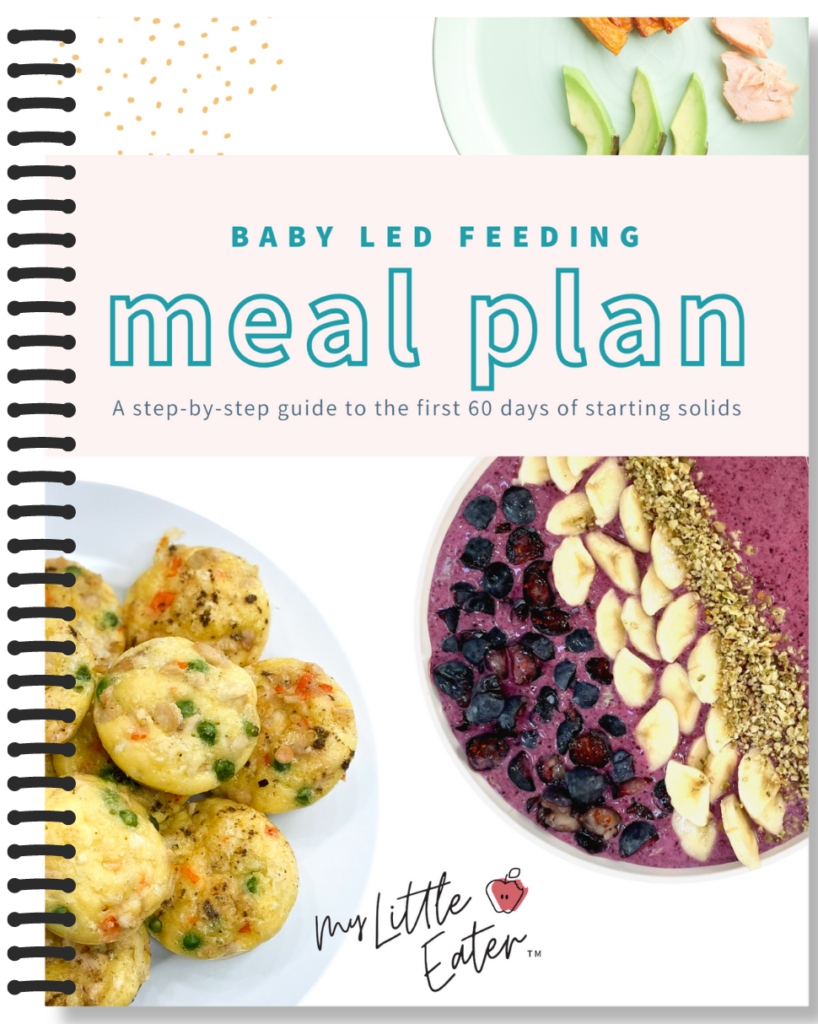This post was sponsored by Kabrita and contains affiliate links, please view our disclosure policy for more details.
Choosing a formula for your infant can feel overwhelming – to say the least. Have you seen all the choices in the formula aisle?
There are SO many things to consider when it comes to choosing an infant formula. And while you might have heard a little bit about cow milk-based formula, you’re probably wondering whether goat milk-based formula would be a good option.
In this blog, we’re going to go over the difference between goat milk-based and cow milk-based infant formula, how they compare from a nutritional standpoint, and whether goat milk-based formula could be the right choice for your infant.
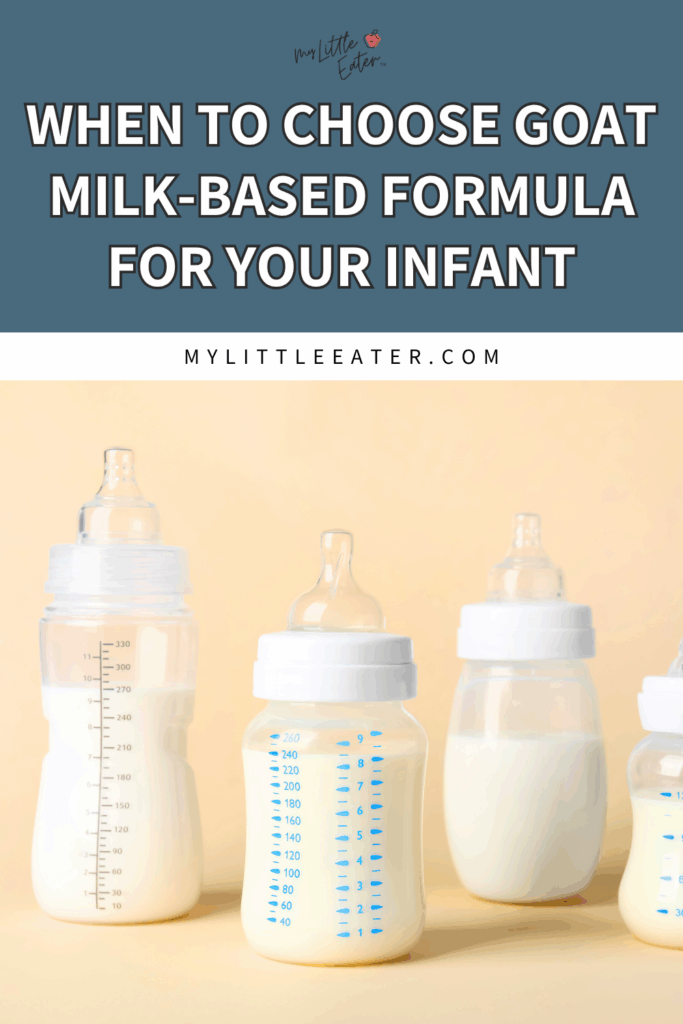
Table of Contents
Key Takeaways
- Goat milk-based formula is a safe, nutritionally complete alternative to cow milk-based formula.
- Goat milk-based formula may be easier on digestion.
- It is not a suitable alternative for infants with cow’s milk protein allergy
Kabrita goat milk-based infant formula is an excellent, My Little Eater (MLE)-approved option for those who decide to put their infant on goat milk-based formula.
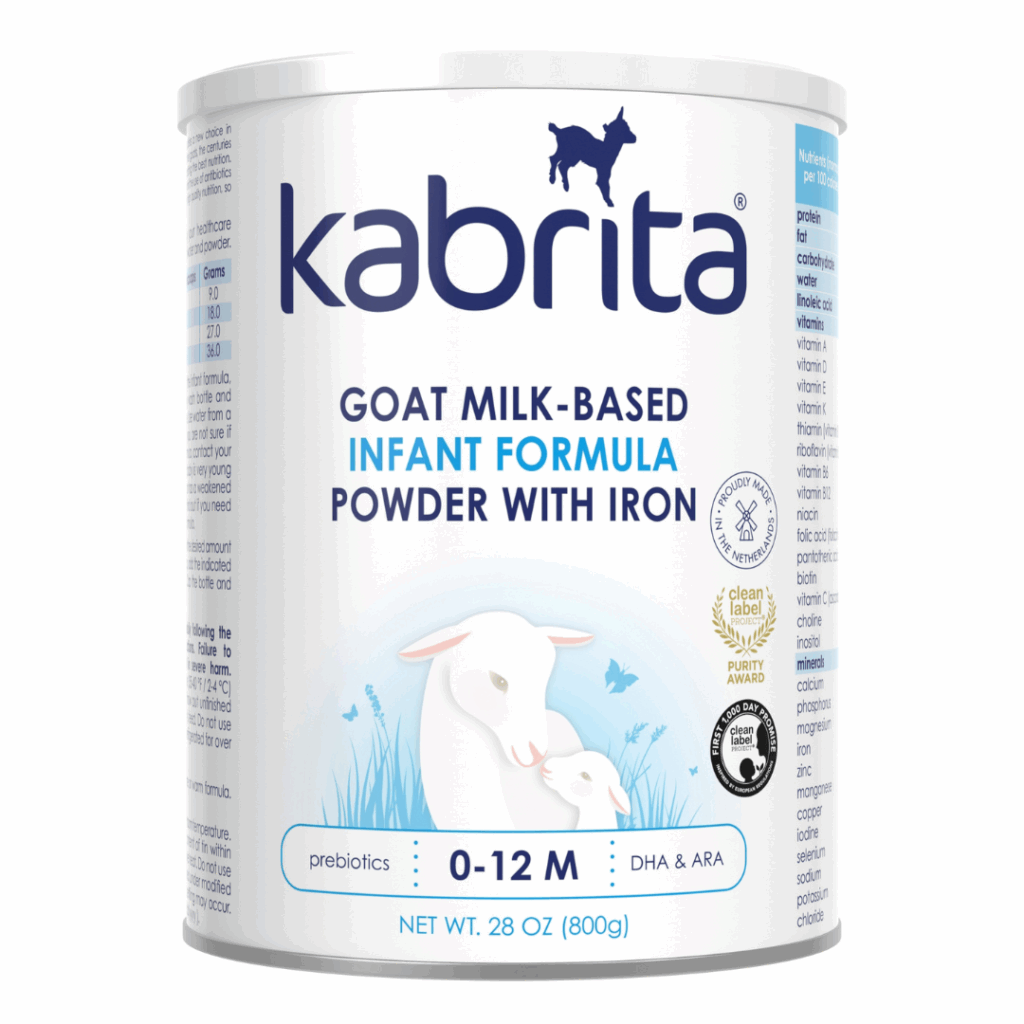
What is goat milk-based infant formula?
Simply put, goat milk-based infant formula uses goat milk as its base ingredient instead of cow milk.
While most infant formulas on the market default to cow milk, goat based infant formulas are becoming a more popular option.
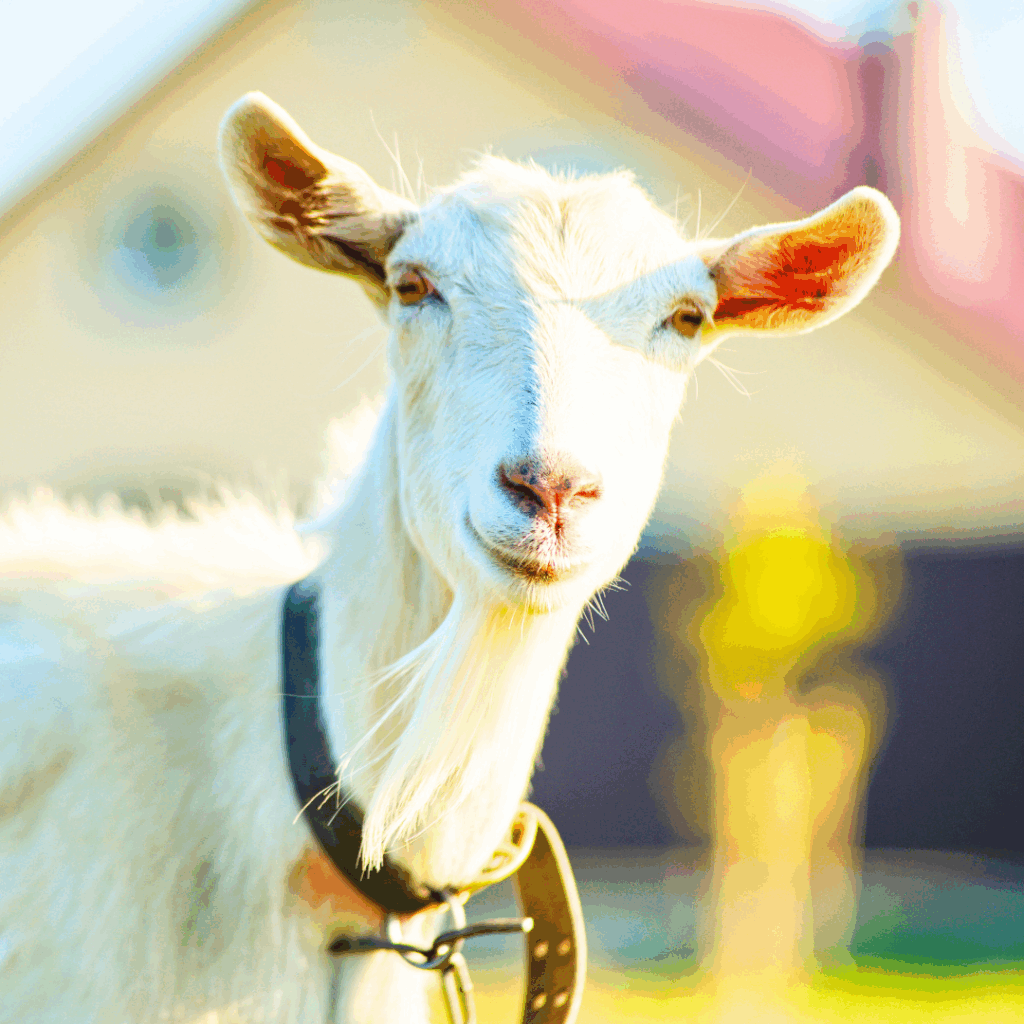
Is goat milk-based formula safe for infants?
Yes! Goat milk formula is a safe, nutritionally complete alternative to cow milk-based formula (1).
It’s been well-researched and has been proven to support the growth and development of infants (2). It’s supported by The American Academy of Pediatrics (AAP) and the Food & Drug Administration (FDA) as a suitable alternative to cow milk-based formula (3).
Infant formula nutrition standards
You might be wondering: If goat milk is different from cow milk, does it still meet all the nutritional needs of a baby?
The answer is yes! Regardless of whether a formula is made from goat milk, cow milk, or anything else, it has to follow strict government regulations to be sold in places like the U.S.
That means every infant formula on the market must meet minimum and maximum levels for key nutrients—like protein, iron, fats, and vitamins—to support healthy development (4).
So, when considering a goat milk-based formula like Kabrita, you can rest assured knowing it’s been rigorously evaluated for safety and nutrition. In fact, Kabrita goat milk-based infant formula meets the standards set by the FDA, the European Union, and Health Canada (6), which means it meets some of the highest standards around the world.

Potential benefits of goat milk formula for infants
While there is some research to show that goat milk-based formula may have benefits related to digestion, more research is needed to confirm that these benefits are applicable across the board when comparing goat milk-based formula to cow milk-based formula.
Benefit #1: May be easier on digestion

Many parents report improvements in their infant’s gastrointestinal symptoms after switching to goat milk-based formula. Reduced gassiness, bloating and constipation have been described.
This may be due to goat milk’s unique fat and protein composition (AKA smaller fat globules and a better casein protein composition) compared to cow milk which may make it easier to digest for some infants (7,8).
Although goat milk-based formula has not been proven as an effective solution for gastrointestinal discomfort in all infants, it may be worth exploring as a potential solution for your infant. So if you’ve already spoken to your pediatrician, have ruled out other causes, and they support you making the switch, it could be worth a try!
Benefit #2: May be closer to breast milk
Goat milk that’s used to make goat milk-based formula naturally has more qualities that make it similar to breast milk:
- Goat milk whey proteins are easier to digest than cow milk whey proteins. A protein digestion study showed that, after 2 hours, both breast milk and goat milk-based infant formula were about 50% digested while cow milk-based infant formula was only about 35% digested (9).
- Goat milk has a unique casein composition that is more similar to that of breast milk when compared to cow milk. Breast milk casein composition predominantly consists of beta-casein (60-70%); goat milk (50%) has a more similar beta-casein composition to breast milk than cow milk (36%)(10).
Goat milk has a higher amount of prebiotics compared to cow milk (10). Similar to human milk oligosaccharides (prebiotics), goat milk oligosaccharides act as prebiotics to support the gut microbiome and digestive health as well as provide immune health benefits.

Important note: It’s worth noting that breast milk cannot be perfectly replicated. Breast milk is often considered a living tissue, and there is no formula that is 100% nutritionally equivalent (12,13). However, goat milk-based formula naturally has these attributes from the goat milk used to create the formula, making it closer to breast milk from the start than most standard cow milk-based formulas.
Goat milk-based formula vs. cow milk-based formula nutrition
Let’s dive into the specifics of what makes goat milk-based formula different (and in some ways similar) to cow’ milk-based formula.
Casein to whey ratio
The two main proteins found in both goat milk and cow milk are called whey and casein (14). Both whey and casein offer nutritional benefits, but whey is digested a bit more easily, while casein curdles in the acidic environment of the stomach (15).
This isn’t usually an issue for those with fully developed digestive systems, but for infants, it can cause some digestive upset – especially since goat milk and cow milk are highest in casein at a ratio of approximately 20:80 whey to casein (14).
To make it easier on infants’ tummies, some infant formulas, like Kabrita goat milk-based infant formula, add more whey into their product (16,17). This also makes it so that the ratio of whey to casein is closer to that of mature breast milk (which is around 60:40) (18).
Casein protein composition
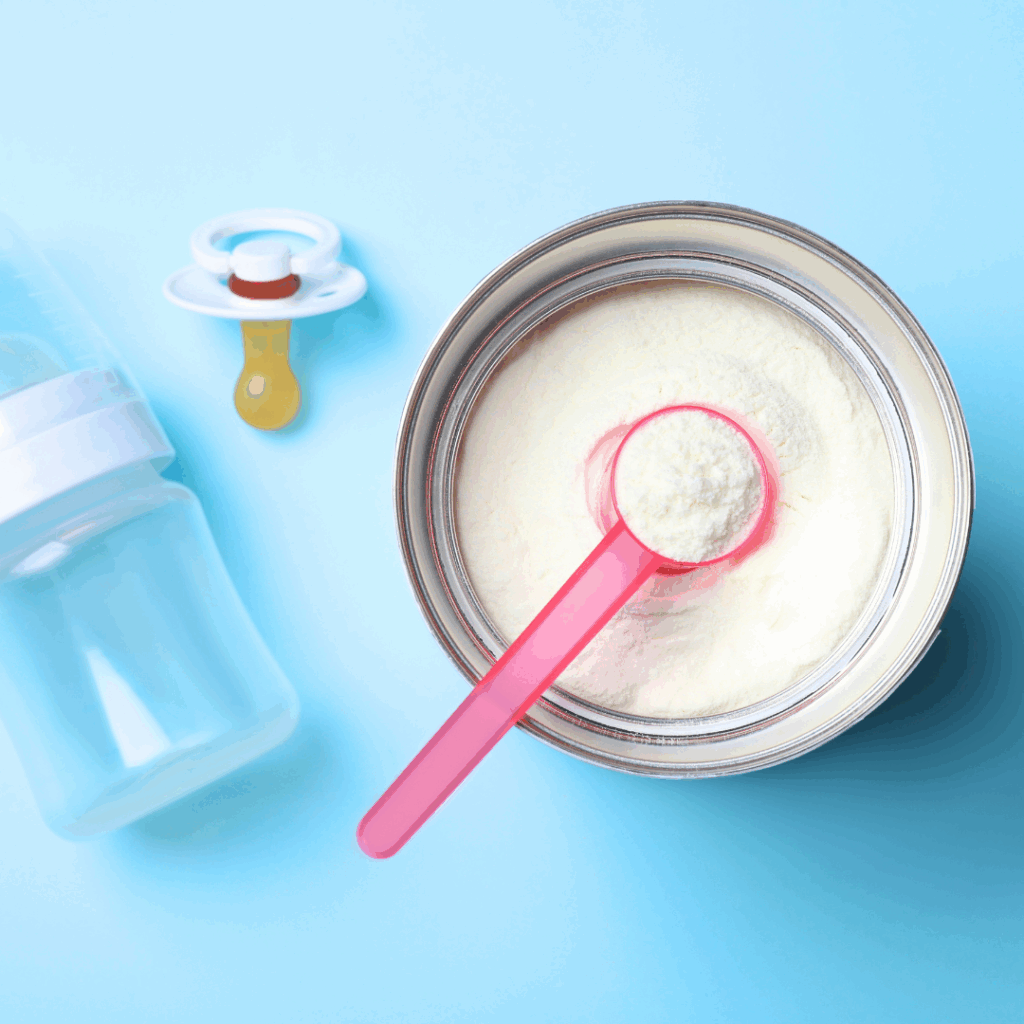
Now that you know about whey and casein, let’s dive a bit deeper.
Cow milk is typically composed of both A1 and A2 casein proteins in a ratio of about 50:50, but the exact ratio comes down to the genetics of the cow (19,20,21). The casein in goat milk on the other hand is almost entirely in the form of A2 (the same is true for the casein found in breast milk) (22,23).
This makes the casein composition in goat milk a bit easier to digest compared to that of cow milk, and may cause fewer gastrointestinal symptoms like gas and bloating (7).
This is related to the fact that when the A2 caseins enter the acidic environment of the stomach, they still curdle, however, the curds that are formed are generally smaller and softer than the ones formed by A1 casein proteins. This makes them potentially easier on sensitive tummies (24).
Some cow milk infant formulas choose to make their product from the milk of cows that only produce A2 casein to make the formula easier to digest (7).
Fatty acid profile
Fats are a SUPER important nutrient for your infant to support their rapid growth and brain development.
DHA and arachidonic acid (ARA) are omega-3 and omega-6 fats, respectively, that are naturally found in breast milk. Both are needed to support the rapid brain and eye development in infants (25,26).

That being said, neither cow milk nor goat milk is comparable to breast milk when it comes to these omega-3 and omega-6 fats. Breast milk is much higher in DHA and ARA (28). This is especially true in moms whose diets are high in fatty fish, and other high-DHA foods (29).
While all infant formulas contain the minimum amount of fat set out by nutrition standards, the exact amount of DHA and ARA can vary depending on factors like the ingredients used.Thankfully, many formulas go above and beyond to provide additional DHA and ARA so that they can guarantee at least a minimum amount that the formula will provide. In fact, adding DHA fats to infant formula is actually required by the European Commission so that formula is as close to breast milk as possible (30).
Kabrita goat milk-based infant formula has added DHA and ARA healthy fats, which is exactly what we recommend looking for in a formula to support your infant’s brain health and development (31).
Fun fact!
Fun fact!
Your infant’s brain doubles in size within the first year of life, which is why brain-supporting nutrients are so important during this time (32)!
Fat globule size
An interesting feature of the fat found in goat’s milk is that it’s structurally smaller than the fat molecules found in cow milk (33). Smaller fat globules are thought to be easier to digest than larger ones – another reason why goat milk formula may be a better option for infants with sensitive tummies (34).
Prebiotics
Breast milk naturally contains an abundance of prebiotics. These are a type of fiber that feeds the healthy bacteria in the gut and helps to support digestive health (35,36,37).
Prebiotics can also help to support the immune system and have been found to help prevent pathogens from adhering to your infant’s GI tract, which may help reduce the risk of bacterial, viral, and parasitic infection
Although not as high as the amount found naturally in breast milk, goat milk tends to be much higher in prebiotics compared to cow milk. Goat milk has around 60 to 350 mg/L whereas cow milk has around 30-60 mg/L (38).
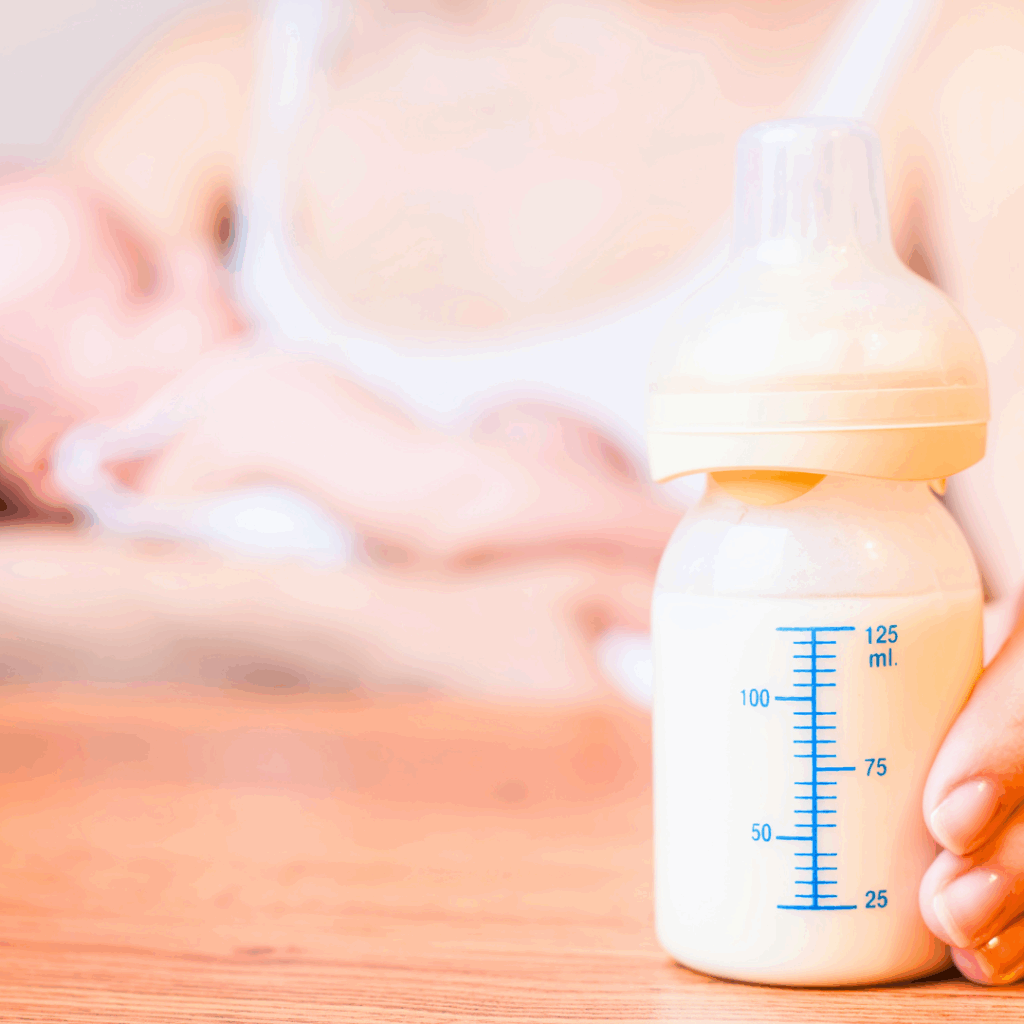
It’s for this reason that many formulas add in prebiotic fibers. These typically appear under the names of galacto-oligosaccharides, fructo-oligosaccharides, or polydextrose on the ingredients list (39).
Infants on formula supplemented with prebiotics generally have a higher level of Bifidobacteria probiotics (a type of healthy bacteria) in their gastrointestinal tract, as well as softer and more frequent poops compared to infants on formulas that are not supplemented with prebiotics (40).
MLE Recommendation: Goat milk-based formula
Kabrita Goat Milk-Based Infant Formula is a European-made formula that goes above and beyond to provide infants with the nutrition needed to support optimal health, growth, and development.
We emphasize “European-made” because that means this formula meets more strict standards than the requirements for the US or Canada. It also means that this goat milk-based infant formula has…
- No GMO ingredients
- No corn syrup
- No glyphosate residue
- No growth hormones or antibiotics
Furthermore, we love that it uses grass-fed milk and has added DHA and ARA fatty acids to support brain health and development. Plus it has added whey protein to support gentle digestion.
Above that, it has all the attributes we love about goat milk-based formula like naturally easier to digest proteins, prebiotic fibers, and smaller fat globules. All of these factors contribute to making it an easy-to-digest option for infants with sensitive tummies.

MLE Recommendation: Cow milk-based formula
One of our favorite cow milk-based infant formulas is Baby’s only A2 Organic Infant Formula.
Unlike some cow milk formulas, it’s made with exclusively A2 casein protein milk and has added whey protein to support gentle digestion. The cow milk used in this formula is also organic and grass-fed, which we love!
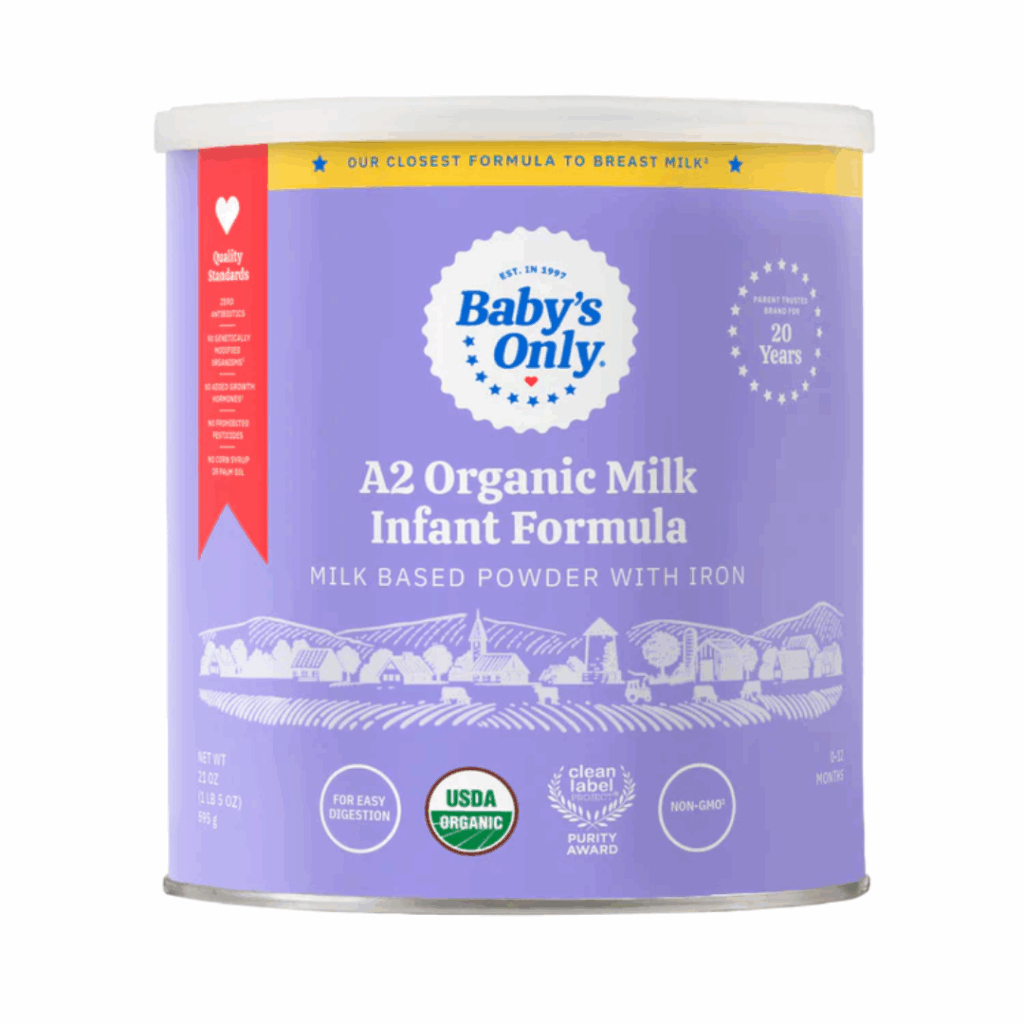
Deciding if goat milk formula is right for your infant
We’ve covered the potential benefits of goat milk-based formula, but you might still be wondering whether it’s the right choice for your infant.
Here are a few common reasons why parents switch to goat milk-based formula (that may help you decide if you’re unsure).
Reason #1: Family preference
This one is pretty straightforward, but some families simply prefer goat milk over cow milk products. These families may choose to start their infant on a goat milk-based formula right off the bat, whether it be related to cultural, geographical, or health reasons.
Reason #2: Seeking a formula that’s closer to breast milk
We know that breast milk is the gold standard when it comes to feeding infants. When breast milk can’t be given, it’s important to look for a formula alternative that has as many similarities to breast milk as possible.
Goat milk-based infant formula has become a popular choice among parents for this reason. As we’ve mentioned, it has naturally easy to digest proteins, prebiotics, and smaller fat globules.
All of these things contribute to making goat milk-based formula more similar to breast milk compared to a standard cow milk-based infant formula (that has not been modified to provide additional A2 casein proteins, DHA, or prebiotics).
Reason #3: Not tolerating their current formula
While many parents choose to start their infant on goat milk-based formula from the beginning, many parents end up switching to a goat milk formula because their infant is not tolerating the one that they were previously on.
There are some signs to look out for that indicate your little one may not be tolerating their formula. If any of the below symptoms are happening, it may be worth looking into a different option, whether that be a goat milk-based formula, a hydrolyzed cow milk formula, or otherwise. Always consult your doctor if you have concerns about your infant tolerating their formula.
Keep an eye out for symptoms of formula intolerance such as (41):
- Spitting up/reflux
- Constipation
- Excessive gas
- Excessive crying or fussiness after feeding
- Difficulty sleeping
- Poor weight gain
Goat milk-based formula isn’t the answer for every formula-intolerant infant, however, it could just be the thing that makes the difference for your infant.

Just remember to always seek the advice of a pediatrician before switching your infant’s formula so that they can rule out any allergies or underlying medical conditions.
Pro tip!
Pro tip!
While you wait for your appointment, it’s a good idea to keep a journal of your infant’s symptoms to help give your pediatrician a better idea of what could be causing the symptoms. Be sure to include details like what symptoms are occurring, how soon they start after feeding, and how long the symptoms last.
A note on formula allergy
There are some symptoms that may indicate a medical emergency such as an allergy, and require immediate action.
Signs of a potential allergy include (42):
- Widespread rash or hives
- Wheezing
- Blood or mucus in the stool
- Persistent vomiting
- Persistent diarrhea

If your infant experiences any of the above symptoms, they will need to be evaluated by a medical professional immediately. Call 911 or head to your nearest emergency room.
We never recommend making changes to your infant’s formula due to an allergic reaction without first having your infant evaluated and discussing the options available to them with their doctor.
As mentioned previously, goat milk-based formula is not a suitable alternative for infants with a cow milk protein allergy. If that is what is causing the reaction, making a switch to goat milk-based formula is not recommended.
Common questions about goat milk-based formula
Can I give my infant goat milk instead of goat milk-based formula?
No! Goat milk on its own should not be given to infants.
Compared to goat milk-based formula, goat milk lacks the appropriate nutrients, in the right amounts, that your infant needs to develop normally such as folate and iron (43).
Goat milk formula on the other hand is made to contain all of the nutrients your infant needs (and in the right amounts).
Does goat milk infant formula taste sour?
There’s a common misconception that goat milk-based formula is sour and doesn’t taste good, but this just isn’t true. Goat milk formula has a mild taste that infants tend to enjoy.
One study showed there was no difference between the reported enjoyment of cow milk-based formulas and goat milk-based formulas (as reported by the parents) (44).
Does goat milk-based formula lack folic acid?
You may have heard someone say that goat milk doesn’t contain enough folate compared to cow milk. While it’s true that goat milk contains less folate than cow milk, it’s important to remember that your infant isn’t drinking regular goat milk, they’re drinking goat milk-based formula (45,46).
As we know, infant formula is highly regulated by strict nutrition standards to ensure that your little one gets all the essential nutrients they need to grow and thrive (5). When these nutrients are not present in formula in high enough amounts, they’re added in until they do meet the nutrition standards (47).
In a nutshell, all infant formulas for sale, including goat milk-based infant formula, contain enough folate, which is an important nutrient that infants need to grow and develop normally. Folate plays a role in the production of red blood cells, and even cognitive development (48,49).
Can goat milk formula be used for an infant with cow milk protein allergy?
No, goat milk formula is not a suitable alternative for infants with Cow’s milk protein allergy (CMPA) (50).
CMPA is one of the most common allergies in young children, affecting around 2-3% of children under age three (51).
Since most infant formulas are made with cow milk by default, infants who have CMPA typically experience allergic symptoms from standard formulas and need to seek out an alternative. Although goat milk is different from cow’s milk in many ways, the proteins among the two are similar enough that there’s a high risk of allergic cross-reactivity (50). Most infants with CMPA will experience allergic symptoms with goat milk-based formulas as well.
For more information on formula alternatives for infants with CMPA, check out our blog on choosing the right formula for your baby.
As a quick summary, goat milk-based infant formula has some qualities that may make it easier for infants to digest, making it a potentially good option for infants with sensitive tummies.
But it’s important to remember that there are also cow milk-based formula options that are made to possess these same qualities. There is not one formula that will work for every infant.
Choose what works best for your family, and always seek the advice of a health professional if the formula your infant is currently on doesn’t seem to be agreeing with them.
If you decide that goat milk formula is something you’d like to try with your infant, whether you’re making the switch from cow’s milk-based infant formula or you’re planning to offer goat milk formula from day one, check out Kabrita!

Their Goat-Milk Based Infant Formula checks all of the boxes for what we look for in a formula…
- Whey-to-casein ratio similar to ma ture breast milk
- Casein protein composition more similar to breast milk than cow milk added DHA and ARA
- plus it has prebiotics, smaller fat globules (for easier digestion), and is made from grass-fed milk
There’s no need to look elsewhere, this option is pediatric dietitian and feeding expert approved by the My Little Eater team!
Pin it to save for later!
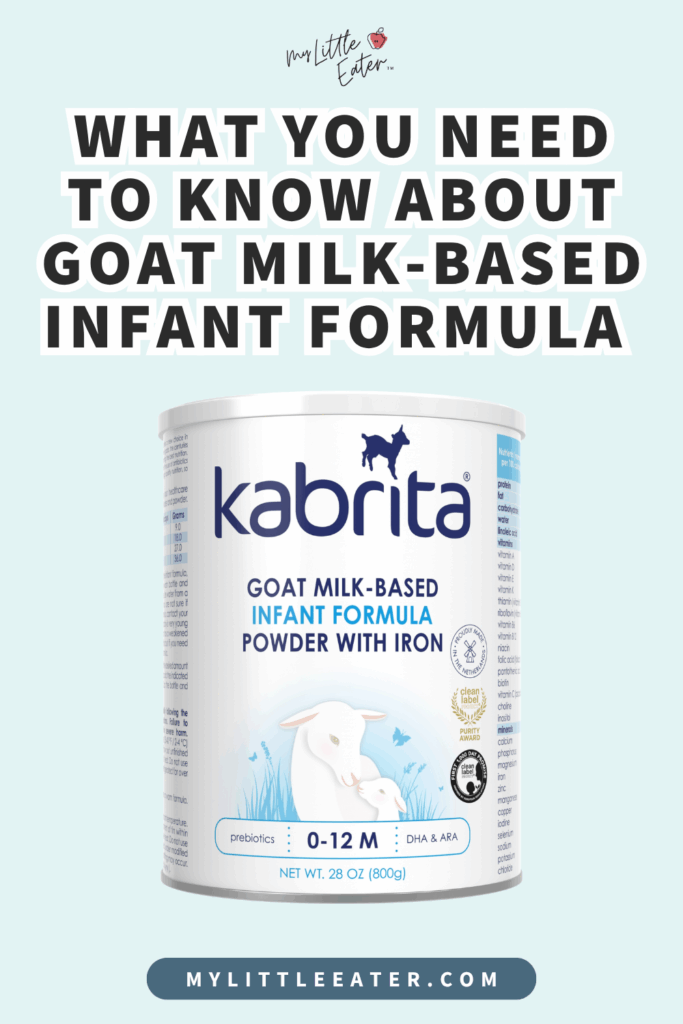
References
- Maathuis, A., Havenaar, R., He, T., & Bellmann, S. (2017). Protein Digestion and Quality of Goat and Cow Milk Infant Formula and Human Milk Under Simulated Infant Conditions. Journal of pediatric gastroenterology and nutrition, 65(6), 661–666. https://doi.org/10.1097/MPG.0000000000001740
- He, T., Woudstra, F., Panzer, F., Haandrikman, A., Verkade, H. J., & van Lee, L. (2022). Goat Milk Based Infant Formula in Newborns: A Double-Blind Randomized Controlled Trial on Growth and Safety. Journal of pediatric gastroenterology and nutrition, 75(2), 215–220. https://doi.org/10.1097/MPG.0000000000003493
- Fuchs, G.J., & Abrams, S.A. (2023, October 20). Choosing a baby formula. American Academy of Pediatrics. Healthychildren.org. https://www.healthychildren.org/English/ages-stages/baby/formula-feeding/Pages/cho osing-an-infant-formula.aspx.
- Green Corkins, K., & Shurley, T. (2016). What’s in the Bottle? A Review of Infant Formulas. Nutrition in clinical practice : official publication of the American Society for Parenteral and Enteral Nutrition, 31(6), 723–729. https://doi.org/10.1177/0884533616669362
- U.S. Food & Drug Administration. (2024). Infant Formula. https://www.fda.gov/food/resources-you-food/infant-formula#oversee
- Kabrita. (2024). Introducing Kabrita Goat Milk-Based Infant Formula. https://kabrita.com/blogs/nourish-blog/introducing-kabrita-goat-milk-based-infant-formula#:~:text=Introducing%20Kabrita®%20Goat%20Milk,requirements%20for%20long%2Dterm%20use.
- Jianqin, S., Leiming, X., Lu, X., Yelland, G. W., Ni, J., & Clarke, A. J. (2016). Effects of milk containing only A2 beta casein versus milk containing both A1 and A2 beta casein proteins on gastrointestinal physiology, symptoms of discomfort, and cognitive behavior of people with self-reported intolerance to traditional cows’ milk. Nutrition journal, 15, 35. https://doi.org/10.1186/s12937-016-0147-z
- Bourlieu, C., Ménard, O., De La Chevasnerie, A., Sams, L., Rousseau, F., Madec, M. N., Robert, B., Deglaire, A., Pezennec, S., Bouhallab, S., Carrière, F., & Dupont, D. (2015). The structure of infant formulas impacts their lipolysis, proteolysis and disintegration during in vitro gastric digestion. Food chemistry, 182, 224–235. https://doi.org/10.1016/j.foodchem.2015.03.001
- Maathuis, A., Havenaar, R., He, T., & Bellmann, S. (2017). Protein digestion and quality of goat and cow milk infant formula and human milk under simulated infant conditions. Journal of Pediatric Gastroenterology and Nutrition, 65(5), 661–666. https://doi.org/10.1097/MPG.0000000000001856
- Rahmatalla, S. A., Arends, D., & Brockmann, G. A. (2022). Review: Genetic and protein variants of milk caseins in goats. Frontiers in Genetics, 13, 916400. https://doi.org/10.3389/fgene.2022.916400
- Cieślińska, A., Kostyra, E., Kostyra, H., Oleński, K., Fiedorowicz, E., & Kamiński, S. (2012). Milk from cows of different β-casein genotypes as a source of β-casomorphin-7. International journal of food sciences and nutrition, 63(4), 426–430. https://doi.org/10.3109/09637486.2011.634785
- He, M., Sun, J., Jiang, Z. Q., & Yang, Y. X. (2017). Effects of cow’s milk beta-casein variants on symptoms of milk intolerance in Chinese adults: a multicentre, randomised controlled study. Nutrition journal, 16(1), 72. https://doi.org/10.1186/s12937-017-0275-0
- van Leeuwen, S. S., Te Poele, E. M., Chatziioannou, A. C., Benjamins, E., Haandrikman, A., & Dijkhuizen, L. (2020). Goat Milk Oligosaccharides: Their Diversity, Quantity, and Functional Properties in Comparison to Human Milk Oligosaccharides. Journal of agricultural and food chemistry, 68(47), 13469–13485. https://doi.org/10.1021/acs.jafc.0c03766
- Kim, S. Y., & Yi, D. Y. (2020). Components of human breast milk: from macronutrient to microbiome and microRNA. Clinical and experimental pediatrics, 63(8), 301–309. https://doi.org/10.3345/cep.2020.00059
- Witkowska-Zimny, M., & Kaminska-El-Hassan, E. (2017). Cells of human breast milk. Cellular & molecular biology letters, 22, 11. https://doi.org/10.1186/s11658-017-0042-4
- Ceballos, L. S., Morales, E. R., de la Torre Adarve, G., Castro, J. D., Martínez, L. P., & Sampelayo, M. R. S. (2009). Composition of goat and cow milk produced under similar conditions and analyzed by identical methodology. Journal of food Composition and Analysis, 22(4), 322-329.
- Martin, C. R., Ling, P. R., & Blackburn, G. L. (2016). Review of Infant Feeding: Key Features of Breast Milk and Infant Formula. Nutrients, 8(5), 279. https://doi.org/10.3390/nu8050279
- Thompkinson, D. K., & Kharb, S. (2007). Aspects of infant food formulation. Comprehensive reviews in food science and food safety, 6(4), 79-102.
- Kabrita. (2024). Goat Milk Infant Formula. https://kabrita.com/products/goat-milk-infant-formula
- Thompkinson, D. K., & Kharb, S. (2007). Aspects of infant food formulation. Comprehensive reviews in food science and food safety, 6(4), 79-102.
- Cieślińska, A., Kostyra, E., Kostyra, H., Oleński, K., Fiedorowicz, E., & Kamiński, S. (2012). Milk from cows of different β-casein genotypes as a source of β-casomorphin-7. International journal of food sciences and nutrition, 63(4), 426–430. https://doi.org/10.3109/09637486.2011.634785
- He, M., Sun, J., Jiang, Z. Q., & Yang, Y. X. (2017). Effects of cow’s milk beta-casein variants on symptoms of milk intolerance in Chinese adults: a multicentre, randomised controlled study. Nutrition journal, 16(1), 72. https://doi.org/10.1186/s12937-017-0275-0
- Urrutia, O., Mendizabal, J. A., & Alfonso, L. (2019). Reconversión de las explotaciones de vacuno de leche a la producción A2. Rev. Frisona Esp, 232, 88-90.
- Sodhi, M., Mukesh, M., Kataria, R. S., Mishra, B. P., & Joshii, B. K. (2012). Milk proteins and human health: A1/A2 milk hypothesis. Indian journal of endocrinology and metabolism, 16(5), 856. https://doi.org/10.4103/2230-8210.100685
- Jung, T. H., Hwang, H. J., Yun, S. S., Lee, W. J., Kim, J. W., Ahn, J. Y., Jeon, W. M., & Han, K. S. (2017). Hypoallergenic and Physicochemical Properties of the A2 β-Casein Fractionof Goat Milk. Korean journal for food science of animal resources, 37(6), 940–947. https://doi.org/10.5851/kosfa.2017.37.6.940
- Wang, Y., Eastwood, B., Yang, Z., de Campo, L., Knott, R., Prosser, C., … & Hemar, Y. (2019). Rheological and structural characterization of acidified skim milks and infant formulae made from cow and goat milk. Food Hydrocolloids, 96, 161-170.
- Tinoco, S. M., Sichieri, R., Moura, A. S., Santos, F.daS., & Carmo, M.d (2007). Importância dos ácidos graxos essenciais e os efeitos dos ácidos graxos trans do leite materno para o desenvolvimento fetal e neonatal [The importance of essential fatty acids and the effect of trans fatty acids in human milk on fetal and neonatal development]. Cadernos de saude publica, 23(3), 525–534. https://doi.org/10.1590/s0102-311×2007000300011
- Lien, E. L., Richard, C., & Hoffman, D. R. (2018). DHA and ARA addition to infant formula: Current status and future research directions. Prostaglandins, leukotrienes, and essential fatty acids, 128, 26–40. https://doi.org/10.1016/j.plefa.2017.09.005
- Stergiadis, S., Nørskov, N. P., Purup, S., Givens, I., & Lee, M. R. F. (2019). Comparative Nutrient Profiling of Retail Goat and Cow Milk. Nutrients, 11(10), 2282. https://doi.org/10.3390/nu11102282
- Gallier, S., Tolenaars, L., & Prosser, C. (2020). Whole Goat Milk as a Source of Fat and Milk Fat Globule Membrane in Infant Formula. Nutrients, 12(11), 3486. https://doi.org/10.3390/nu12113486
- Jensen, C. L., Maude, M., Anderson, R. E., & Heird, W. C. (2000). Effect of docosahexaenoic acid supplementation of lactating women on the fatty acid composition of breast milk lipids and maternal and infant plasma phospholipids. The American journal of clinical nutrition, 71(1 Suppl), 292S–9S. https://doi.org/10.1093/ajcn/71.1.292s
- Le Huërou-Luron, I., Lemaire, M., & Blat, S. (2018). Health benefits of dairy lipids and MFGM in infant formula. Oléagineux, Corps Gras, Lipides, 25(3).https://doi.org/10.1051/ocl/2018019
- Kabrita. (2024). Introducing Kabrita Goat Milk-Based Infant Formula. https://kabrita.com/blogs/nourish-blog/introducing-kabrita-goat-milk-based-infant-formula#:~:text=Introducing%20Kabrita®%20Goat%20Milk,requirements%20for%20long%2Dterm%20use.
- Knickmeyer, R. C., Gouttard, S., Kang, C., Evans, D., Wilber, K., Smith, J. K., Hamer, R. M., Lin, W., Gerig, G., & Gilmore, J. H. (2008). A structural MRI study of human brain development from birth to 2 years. The Journal of neuroscience : the official journal of the Society for Neuroscience, 28(47), 12176–12182. https://doi.org/10.1523/JNEUROSCI.3479-08.2008
- Alothman, M., Hogan, S. A., Hennessy, D., Dillon, P., Kilcawley, K. N., O’Donovan, M., Tobin, J., Fenelon, M. A., & O’Callaghan, T. F. (2019). The “Grass-Fed” Milk Story: Understanding the Impact of Pasture Feeding on the Composition and Quality of Bovine Milk. Foods (Basel, Switzerland), 8(8), 350. https://doi.org/10.3390/foods8080350
- Attaie, R., & Richter, R. L. (2000). Size distribution of fat globules in goat milk. Journal of dairy science, 83(5), 940-944.
- Bourlieu, C., Ménard, O., De La Chevasnerie, A., Sams, L., Rousseau, F., Madec, M. N., Robert, B., Deglaire, A., Pezennec, S., Bouhallab, S., Carrière, F., & Dupont, D. (2015). The structure of infant formulas impacts their lipolysis, proteolysis and disintegration during in vitro gastric digestion.
- Kunz, C., Rudloff, S., Baier, W., Klein, N., & Strobel, S. (2000). Oligosaccharides in human milk: structural, functional, and metabolic aspects. Annual review of nutrition, 20, 699–722. https://doi.org/10.1146/annurev.nutr.20.1.699
- Carlson, J. L., Erickson, J. M., Lloyd, B. B., & Slavin, J. L. (2018). Health Effects and Sources of Prebiotic Dietary Fiber. Current developments in nutrition, 2(3), nzy005. https://doi.org/10.1093/cdn/nzy005
- van Leeuwen, S. S., Te Poele, E. M., Chatziioannou, A. C., Benjamins, E., Haandrikman, A., & Dijkhuizen, L. (2020). Goat Milk Oligosaccharides: Their Diversity, Quantity, and Functional Properties in Comparison to Human Milk Oligosaccharides. Journal of agricultural and food chemistry, 68(47), 13469–13485. https://doi.org/10.1021/acs.jafc.0c03766
- Triantis, V., Bode, L., & van Neerven, R. J. J. (2018). Immunological Effects of Human Milk Oligosaccharides. Frontiers in pediatrics, 6, 190. https://doi.org/10.3389/fped.2018.00190
- Vandenplas, Y., De Greef, E., & Veereman, G. (2014). Prebiotics in infant formula. Gut microbes, 5(6), 681–687. https://doi.org/10.4161/19490976.2014.972237
- Vivatvakin, B., Estorninos, E., Lien, R., Lee, H. C., Hon, K. L. E., Lebumfacil, J., Cercamondi, C. I., & Volger, S. (2020). Clinical Response to Two Formulas in Infants with Parent-Reported Signs of Formula Intolerance: A Multi-Country, Double-Blind, Randomized Trial. Global pediatric health, 7, 2333794X20954332. https://doi.org/10.1177/2333794X20954332
- Caffarelli, C., Baldi, F., Bendandi, B., Calzone, L., Marani, M., Pasquinelli, P., & EWGPAG (2010). Cow’s milk protein allergy in children: a practical guide. Italian journal of pediatrics, 36, 5. https://doi.org/10.1186/1824-7288-36-5
- Turck D. (2013). Cow’s milk and goat’s milk. World review of nutrition and dietetics, 108, 56–62. https://doi.org/10.1159/000351485
- Jung, C., González Serrano, A., Batard, C., Seror, E., Gelwane, G., Poidvin, A., Lavallée, I., Elbez, A., Brussieux, M., Prosser, C., Gallier, S., & Bellaïche, M. (2023). Whole Goat Milk-Based Formula versus Whey-Based Cow Milk Formula: What Formula Do Infants Enjoy More?-A Feasibility, Double-Blind, Randomized Controlled Trial. Nutrients, 15(18), 4057. https://doi.org/10.3390/nu15184057
- US. Department of Agriculture. (2019). Milk, goat, fluid, with added vitamin D. https://fdc.nal.usda.gov/food-details/171278/nutrients
- US. Department of Agriculture. (2019). Milk, reduced fat, fluid, 2% milkfat, without added vitamin A and vitamin D. https://fdc.nal.usda.gov/food-details/172205/nutrients
- Prosser, C. (2021). Compositional and functional characteristics of goat milk and relevance as a base for infant formula. Journal of food science. 86(2). DOI:10.1111/1750-3841.15574
- Ross, A. C., Caballero, B. H., Cousins, R. J., Tucker, K. L., & Ziegler, T. R. (2012). Modern nutrition in health and disease: Eleventh edition. Wolters Kluwer Health Adis (ESP).
- Irvine, N., England-Mason, G., Field, C. J., Dewey, D., & Aghajafari, F. (2022). Prenatal Folate and Choline Levels and Brain and Cognitive Development in Children: A Critical Narrative Review. Nutrients, 14(2), 364. https://doi.org/10.3390/nu14020364
- Benjamin-van Aalst, O., Dupont, C., van der Zee, L., Garssen, J., & Knipping, K. (2024). Goat Milk Allergy and a Potential Role for Goat Milk in Cow’s Milk Allergy. Nutrients, 16(15), 2402. https://doi.org/10.3390/nu16152402
- American College of Allergy Asthma and Immunology (2019). Milk & Dairy. https://acaai.org/allergies/allergic-conditions/food/milk-dairy/
- Stergiadis, S., Nørskov, N. P., Purup, S., Givens, I., & Lee, M. R. F. (2019). Comparative Nutrient Profiling of Retail Goat and Cow Milk. Nutrients, 11(10), 2282. https://doi.org/10.3390/nu11102282

Edwena Kennedy, RD
Founder and lead Registered Pediatric Dietitian at My Little Eater Inc., creator of The Texture Timeline™, and mom of two picky-turned-adventurous eaters.

Edwena Kennedy, RD
Founder and lead Registered Pediatric Dietitian at My Little Eater Inc., creator of The Texture Timeline™, and mom of two picky-turned-adventurous eaters.





